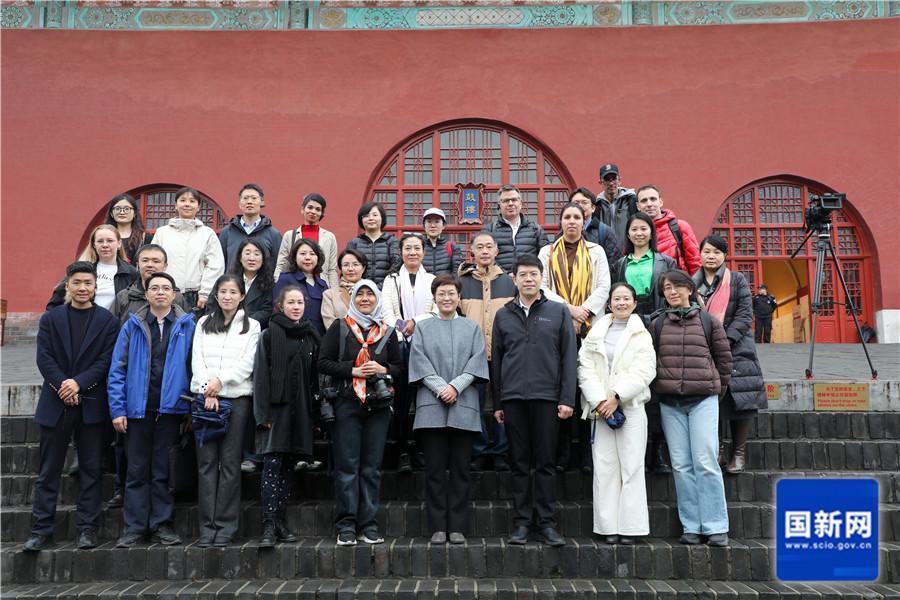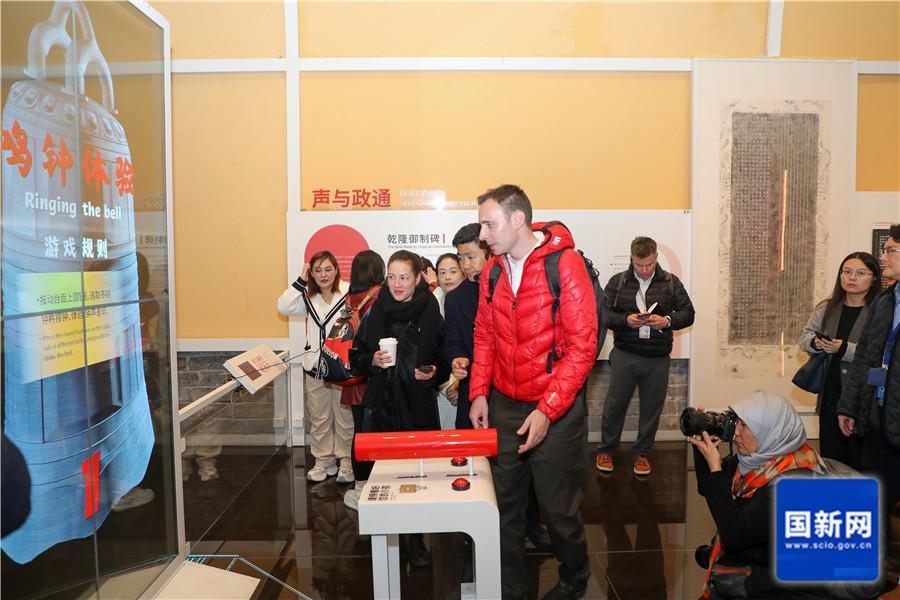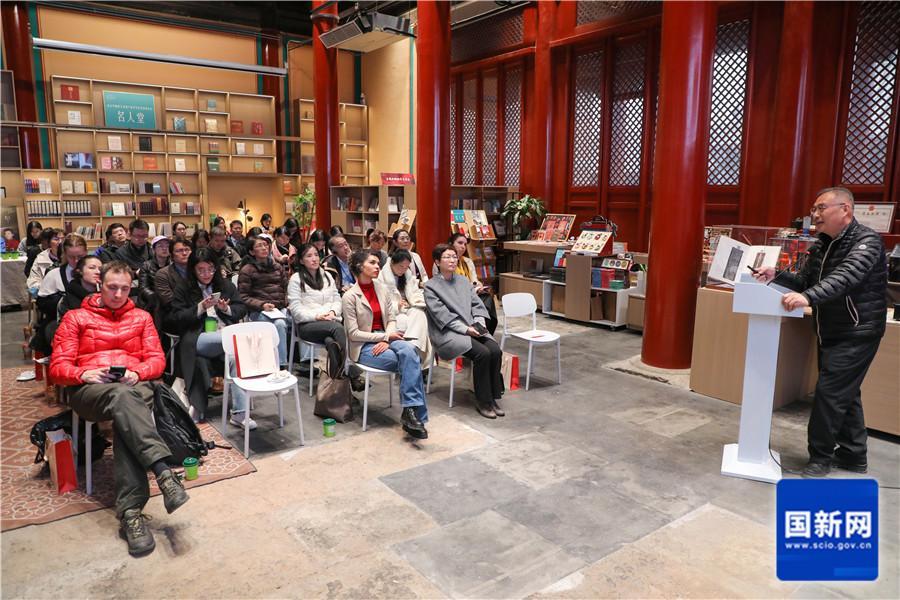SCIO hosts media tour to world heritage site Central Axis
China SCIO | November 15, 2024

The State Council Information Office holds a Beijing Central Axis cultural salon on Nov. 13, 2024. [Photo by Liu Jian/China SCIO]
The State Council Information Office (SCIO) invited journalists from foreign media outlets on Wednesday to visit the Bell and Drum Towers on Beijing Central Axis, which was named a UNESCO World Heritage Site earlier this year.
Stretching 7.8 kilometers from north to south through the heart of historical Beijing, the Central Axis consists of several cultural landmarks and is considered an embodiment of urban planning traditions of China.

Xing Huina, deputy director general of the Press Bureau of the State Council Information Office (SCIO) and spokesperson of the SCIO, chairs a lecture in Beijing on Nov. 13, 2024. [Photo by Liu Jian/China SCIO]
Xing Huina, deputy director general of the Press Bureau of the SCIO and spokesperson of the SCIO, delivered a speech at the beginning of the media tour, highlighting the significance of the Central Axis.
"It has witnessed over 700 years of development and changes in Beijing," Xing said, adding that the Bell and Drum Towers, located at its northern end, were originally constructed during the Yuan dynasty (1271-1368) and served as the time-telling center until the Qing dynasty (1636-1912).

Journalists visit an exhibition at the Drum Tower in Beijing on Nov. 13, 2024. [Photo by Liu Jian/China SCIO]
The journalists first paid visits to two exhibitions in the red-walled, gray-tiled building Drum Tower.
In the exhibition "The Story of Time," which features exhibits, digital films, and interactive installations, the journalists explored the immersive 720-degree space, filled with a ceremonial ambiance and the sound of bells and drums. They also learned about the architectural history and features of the building, as well as the working mechanism of ancient timekeepers through digital light and shadow art.
Another exhibition of timekeeping devices in ancient China showcases reproductions of ancient Chinese timekeepers, including striking drums, incense clocks, and sundials.
Up on the gray-walled Bell Tower, the journalists closely examined the heaviest existing timekeeping bronze bell in China and learned about its history and manufacturing techniques. As they walked around the second floor of the Bell Tower, they enjoyed a panoramic view of the city, with historical buildings nearby and modern buildings in the distance.
Some journalists mentioned that, although they had viewed the towers from afar or walked around them, this was their first time inside these historical buildings.
Takashi Yanagisawa, chief of the General Bureau of China of Japan's Nippon TV, said that the up-close experience allowed him to better appreciate the grandeur and ancient beauty of these towers, far beyond what is visible from the outside, and to directly feel the striking straightness of the Central Axis.

Lyu Zhou, director of the National Heritage Center of Tsinghua University and the group leader for text compiling on the Beijing Central Axis World Heritage application team, gives a thematic lecture in Beijing on Nov. 13, 2024. [Photo by Liu Jian/China SCIO]
Following the building visits, Lyu Zhou, director of the National Heritage Center of Tsinghua University and the group leader for text compiling on the Beijing Central Axis World Heritage application team, gave an in-depth presentation on the history, culture, significance, and preservation of the Central Axis.
"The Central Axis of Beijing is a living testament to civilization, embodying the continuity of Chinese culture, and serves as a valuable reference for future applications for world heritage status," Lyu said.
"The Central Axis is a real symbol of Beijing and the symbol of China," Lewis Porylo, a Beijing-based journalist of Market News International, said after listening to Lyu's lecture. He added that it is interesting to learn more about how ancient Chinese architecture was incorporated into modern Chinese architecture.
According to Lyu, Beijing has made many innovative efforts to promote the Central Axis and the culture it entails, including a variety of cultural activities as well as digital and cultural creativity products.
The Bell and Drum Towers have also hosted intangible cultural heritage fairs, drumming and bell ringing ceremonies, as well as tours aided by artificial intelligence glasses.
Eunha Park, a Beijing-based news correspondent for South Korea's newspaper Kyunghyang Shinmun, said she was impressed by the technology used in the Drum Tower's digital show. She said it was great to see in person what she had learned from books when studying Chinese history in university.
A total of 17 journalists from 12 foreign media outlets participated in the tour.